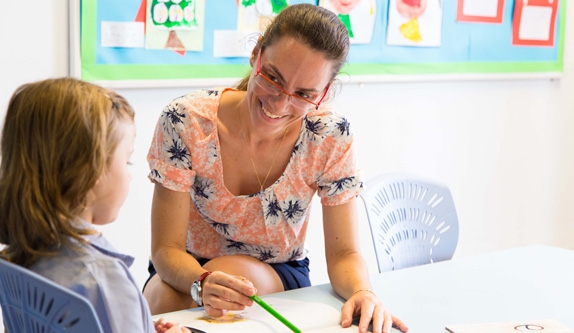
“It is widely agreed that children should be taught how to think, not what to think, in order to be successful twenty-first century learners and citizens. Avondale Grammar School’s Assistant Principal and Head of Primary and Middle School, Charlotte Humphrey, shares with parents useful tips to help teach children how to think?”
- Encourage patience and persistence, with so much information and misinformation available online, student’s need to understand the importance of ‘fact’ checking. As a parent, model the habit of asking questions such as “How do we know this is true?” and “Why should I agree with this opinion?”
- Check the reliability of a website or reference book. Ask: Does the URL have an official suffix such as .govt, .org or .edu? When was the information posted or published? Are the sources stated? Is the spelling and grammar correct? Is the author an expert? How can you tell? Is the information the same or different on other trusted sites?
- Copying and pasting information is not thinking, and students need to know that they will never gain good grades by doing this. They must be able to demonstrate understanding, ask them: Can you summarise what you’ve just read (i.e. break it down into the main ideas and a few simple examples)? Can you explain it in your own words? Get them to practise this skill aloud.
- Ask a mixture of factual and inferential questions. Watch, read or listen to a news report with your child, or read a thought-provoking story together. (Before you start, think about the child’s prior knowledge of the topic and choose something that is neither too hard nor too easy, because the brain is stimulated by challenge, but inhibited by threat.) Talk about what you’ve read. Start with the facts: Who did what? Where? When? How? Then move to higher order thinking skills and ask Why? How can you tell? On other occasions, try asking the inferential questions before the factual ones. Some children prefer to start with ‘the big picture’. Beware of asking leading questions, such as “He shouldn’t have done that, should he?”
- Encourage your child to wonder, and to ask more questions, for example, What if…? Find out whether they can make connectionsbetween the text and people, places and events from other stories or real life. Ask: Did this remind you of anything else you’ve seen, heard or read? Why?
- Some children demonstrate their thinking best through creative activities. Active, artistic children can be encouraged to share their knowledge and ideas with you through drawings, models, dance and role play. Any opportunity for enthusiastic review and reflection is worthwhile. Ask: Can you draw that? Can you show me? Can you act it out? Always include plenty of talk.
- Children who become good thinkers learn to look at information from different perspectives. Try using the strategy of ‘Thinking like a/the…’ this can open minds, develop empathy and discourage children from generalising or rushing to judgement about others. For example, in the fairy tale Cinderella, suggest your child tries thinking like the sisters, rather than thinking like Cinderella. Might there be reasons why the sisters behave the way they do? Your child may still reach the conclusion that the sisters are ‘the baddies’, but along the way you are likely to have a very worthwhile discussion about the wider issue of how people should treat each other.
For more information please visit www.avondale.edu.sg/thinking-thinking







